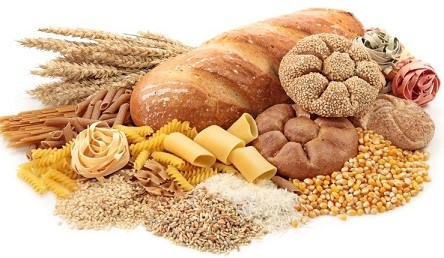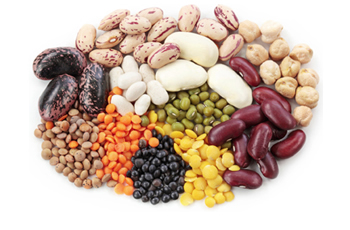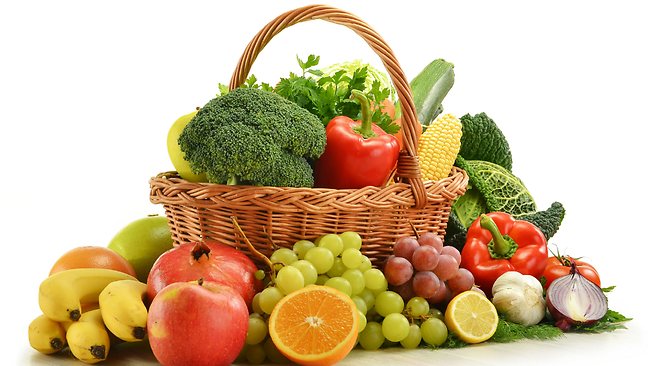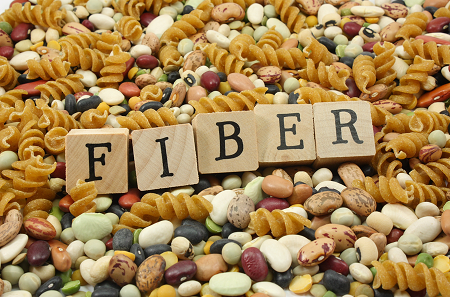Everyone has been advised, at some point in life, to eat more fiber. However, not everyone is aware of the nutritional benefits of fiber or its recommended daily intake for the average person. Including fiber rich foods in your diet can have an extremely beneficial impact on your health because fiber has innumerable advantages. It plays a major role in reducing Type 2 diabetes and certain cancers. Further, it helps regulate digestion and significantly reduces cholesterol levels and assists in maintaining a healthy blood pressure. Most importantly, fiber plays a major role in the prevention of constipation; it adds bulk to stools and cleans out the colon.
How Much Fiber Should I Eat a Day?
In general, a healthy adult should consume about 14g of fiber for every 1,000 calories ingested. Therefore, if you're on a 2,000 calorie diet, your fiber intake should be 28g. However, the needs for dietary fiber tend to vary depending on the gender.
- Men who are fifty or younger should eat approximately 38 grams of fiber every day. For males who are fifty-one or older, the recommended amount of fiber to be consumed per day goes down to 30 grams. People who are on diets, with limited calorie count, should also consume less fiber.
- Women who are fifty or younger should eat roughly 25 grams of fiber per day. Females who are fifty-one or older should consume less fiber; approximately 21 grams of fiber every day. If a woman is on a diet, with restricted calories, then the amount of fiber should be reduced accordingly.
How Do I Increase My Fiber Intake?
How much fiber should I eat a day? That depends on your gender, your diet choice as well as your age. Whatever your need is, here're some great options to ensure you get enough amount.
1. Grains and Cereals
 In order to increase intake of fiber, one can include grains and cereals in diet. As a general rule, an individual, who wishes to consume greater amounts of fiber, should include at least one serving of grains or cereal at every meal. This can be achieved easily by simply sprinkling oats or wheat germ on salads, soups, yoghurt and breakfast cereals. Further, plain white flour can be substituted with whole-wheat flour. Similarly, brown bread and brown rice should replace white bread and white rice respectively. Additionally, whole-wheat crackers can serve as an enjoyable snack.
In order to increase intake of fiber, one can include grains and cereals in diet. As a general rule, an individual, who wishes to consume greater amounts of fiber, should include at least one serving of grains or cereal at every meal. This can be achieved easily by simply sprinkling oats or wheat germ on salads, soups, yoghurt and breakfast cereals. Further, plain white flour can be substituted with whole-wheat flour. Similarly, brown bread and brown rice should replace white bread and white rice respectively. Additionally, whole-wheat crackers can serve as an enjoyable snack.
2. Legumes and Beans
 Other than including grains and cereals in one's diet, consumption of legumes and beans should also be increased. Garbanzos, kidney beans and other beans can be sprinkled over salads. Instead of religiously eating meat, one can substitute it for legumes in chili or soups. One should also experiment with Indian and Middle Eastern cuisine when cooking as these cuisines use beans and legumes in several different ways, both in the form of main dishes as well as salads.
Other than including grains and cereals in one's diet, consumption of legumes and beans should also be increased. Garbanzos, kidney beans and other beans can be sprinkled over salads. Instead of religiously eating meat, one can substitute it for legumes in chili or soups. One should also experiment with Indian and Middle Eastern cuisine when cooking as these cuisines use beans and legumes in several different ways, both in the form of main dishes as well as salads.
3. Fruits and Vegetables
 Fruits and vegetables are also excellent sources of dietary fiber. It is recommended to include at least five servings of fruits and vegetables in your diet every day. Also, fresh fruit is always preferable or tinned or canned fruit. Further, the peel of the fruits is of utmost importance as it contains the maximum amount of fiber and thus should not be thrown away. Also, instead of drinking packaged fruit juices, which contain absolutely no fiber, it is better to eat fresh fruits on their own. In fact, instead of opting for fat and sugar laden desserts, one can simply eat fruits to satisfy their sweet tooth. Add dry fruits to pancake, cookie and cake batters, and sprinkle grated carrots over salads and add banana slices to your breakfast cereals. These are all ways to increase the intake of dietary fiber.
Fruits and vegetables are also excellent sources of dietary fiber. It is recommended to include at least five servings of fruits and vegetables in your diet every day. Also, fresh fruit is always preferable or tinned or canned fruit. Further, the peel of the fruits is of utmost importance as it contains the maximum amount of fiber and thus should not be thrown away. Also, instead of drinking packaged fruit juices, which contain absolutely no fiber, it is better to eat fresh fruits on their own. In fact, instead of opting for fat and sugar laden desserts, one can simply eat fruits to satisfy their sweet tooth. Add dry fruits to pancake, cookie and cake batters, and sprinkle grated carrots over salads and add banana slices to your breakfast cereals. These are all ways to increase the intake of dietary fiber.
4. Meal Plan Packed With Fiber
Although the guidelines that have been mentioned above will help anyone tremendously who is trying to consume greater amounts of fiber, the complete meal plan perhaps would help even further.
- For breakfast, your aim should be to consume roughly 6-7 grams of fiber. This means you can have a whole-wheat bran cereal along with a small banana. Instead of opting for whole milk, skimmed or low fat milk should be used.
- For lunch, another 8 grams of fiber should be consumed. This means eating a healthy brown bread turkey sandwich with an assortment of vegetables such as tomatoes, lettuce and cucumbers etc. For dessert, oranges are ideal.
- For dinner, the ideal amount of fiber to be consumed is 12 grams. A healthy option would include grilled fish, preferably salmon, along with a light lettuce and carrot salad. Appropriate sides would include one cup of spinach and one cup of legumes.
Other than these three main meals, you are also encouraged to take snacks in between. You can munch on almonds, sip yoghurt with blueberries added in it or simply eat a few raisins. Three cups of popped popcorn can serve as a delicious midnight snack.
What Is the Difference Between Soluble and Insoluble Fiber?
 Now you know the answer to "how much fiber should I eat a day" let's learn something about fiber. Fiber or dietary fiber, more commonly known as roughage or bulk, refers to all those plant foods that the body is unable to digest or absorb. Unlike other nutrients including proteins, carbohydrates and fats, fiber is not digested by the body and thus not absorbed into the blood stream like other food components. Rather, it passes through the stomach, small intestines and colon and then finally out of the body.
Now you know the answer to "how much fiber should I eat a day" let's learn something about fiber. Fiber or dietary fiber, more commonly known as roughage or bulk, refers to all those plant foods that the body is unable to digest or absorb. Unlike other nutrients including proteins, carbohydrates and fats, fiber is not digested by the body and thus not absorbed into the blood stream like other food components. Rather, it passes through the stomach, small intestines and colon and then finally out of the body.
Fiber is of two types: soluble and insoluble.
- Soluble fiber is fiber that can be dissolved in water and on doing so, forms a gel like substance. This type of fiber is known for reducing cholesterol levels in the body and for regulating glucose levels in the blood. Oats, beans, peas, apples, carrots, citrus fruits, barley and psyllium are all rich sources of soluble fiber.
- Insoluble fiber, on the other hand, does not dissolve in water and its primary function is to regulate bowel movements. It helps to pass things through the body and are thus are of great benefit to those individuals who suffer from constipation or irregular stool. Fruits, vegetables and whole grain products generally contain a lot of insoluble fiber.
